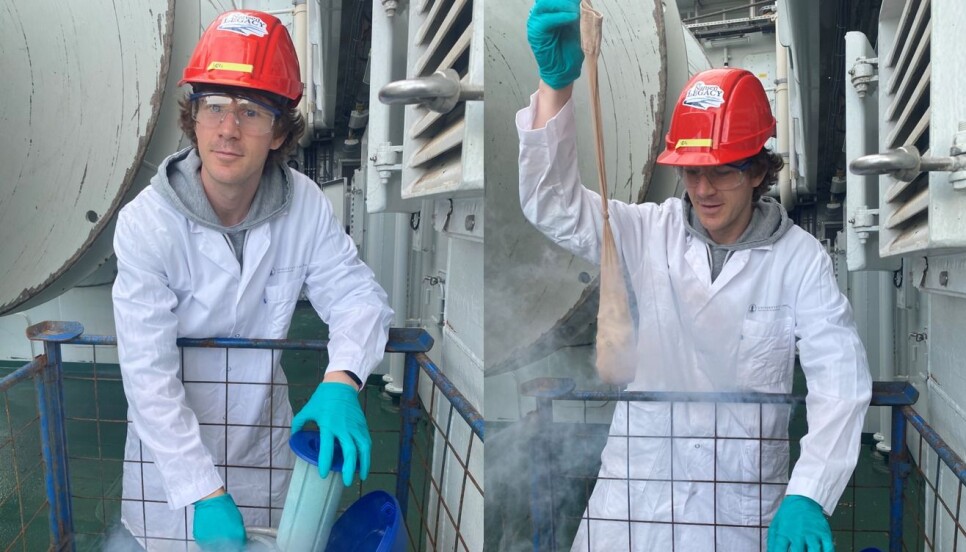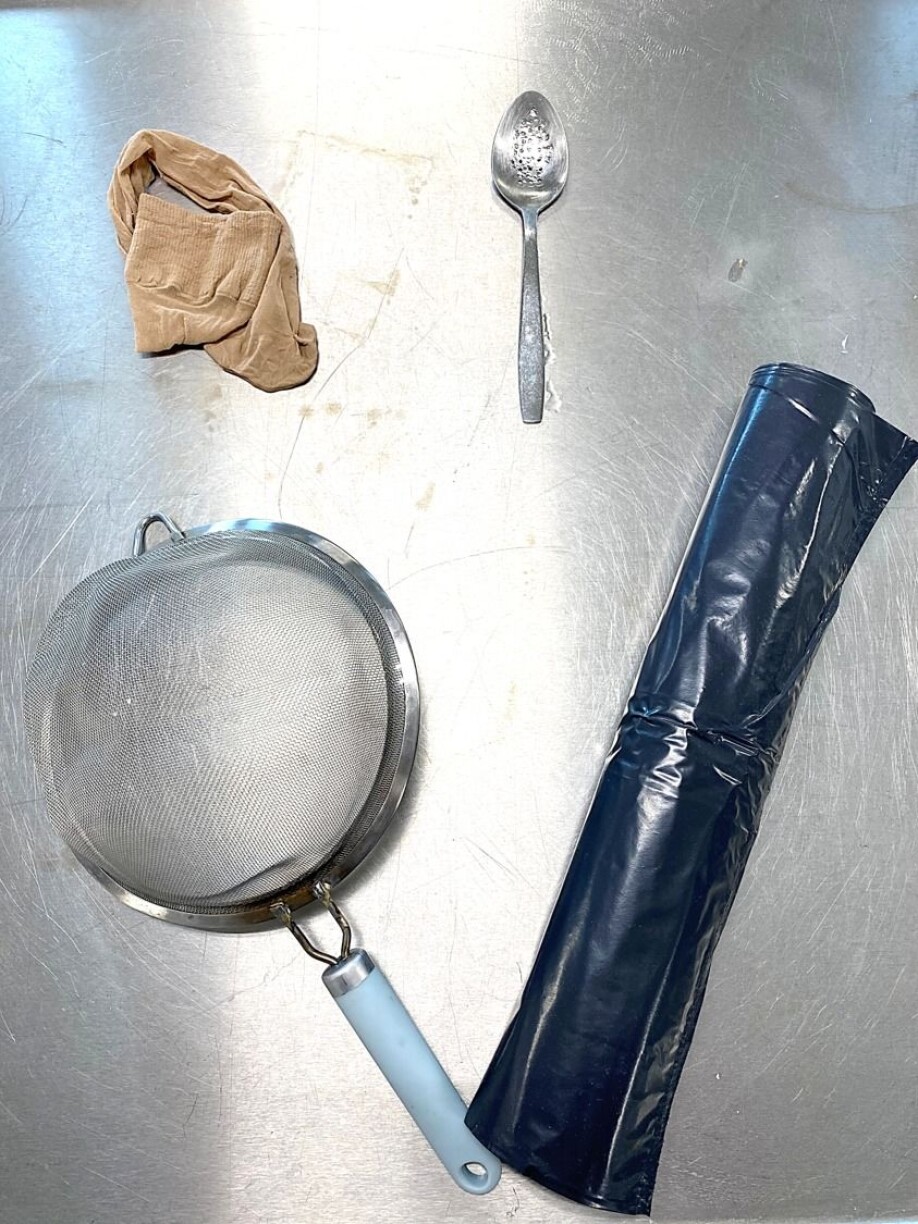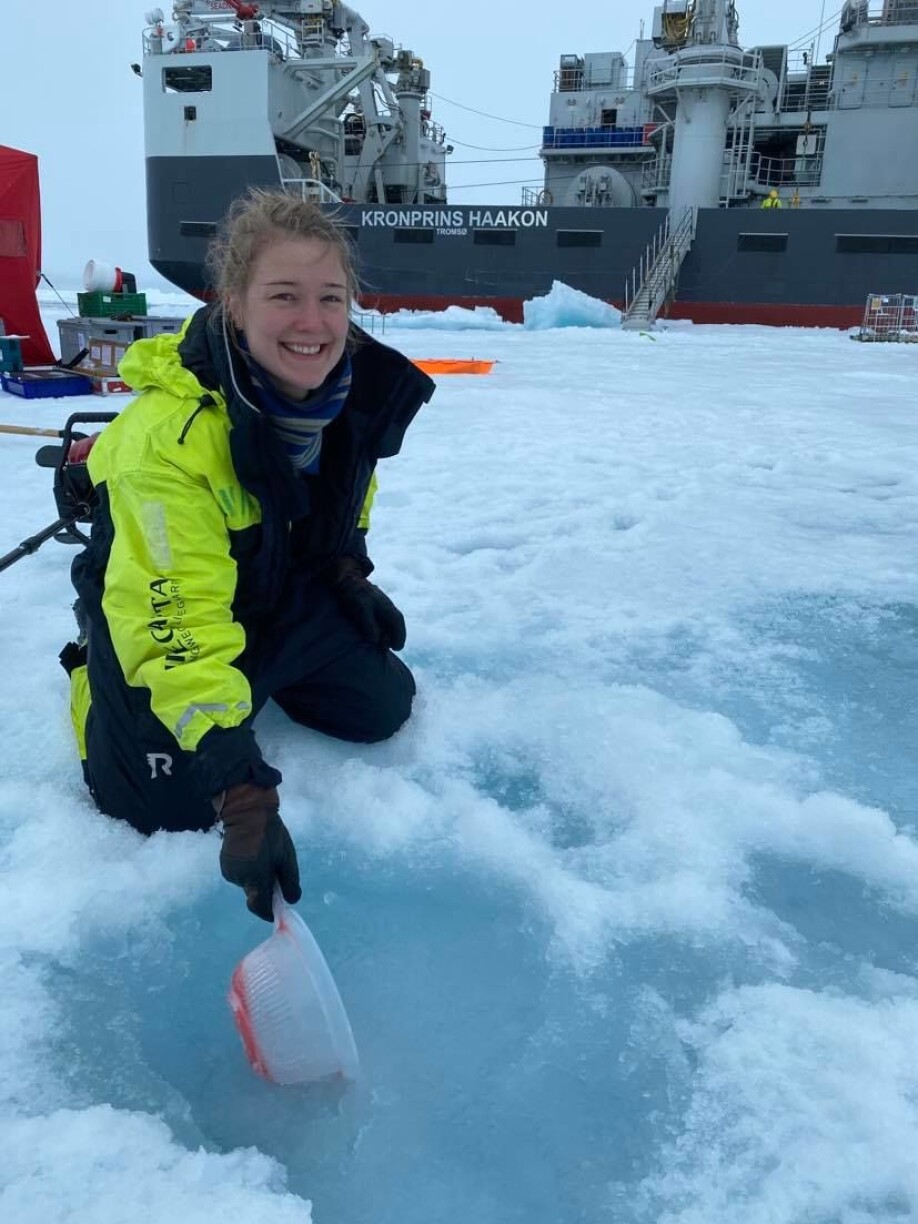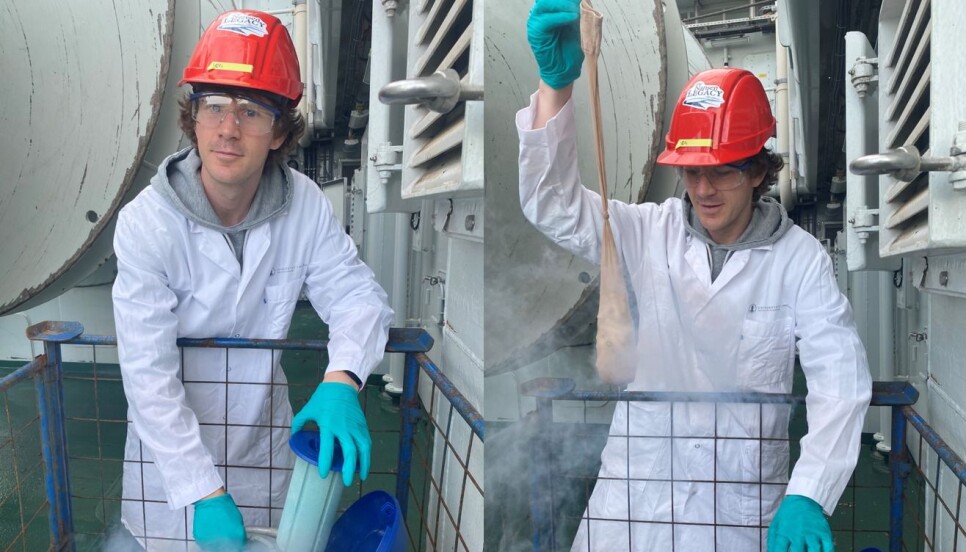Summer cruise july 2021

From your home to the lab:
Household items in the life of a marine scientist
What do a spoon, colander, garbage bag and stocking have in common?

These typical household items are four of the most favorite items used by scientists (See picture 1). This might come as a surprise when thinking of science with all its fancy tools and equipment: labs full of buttons, wires and high-tech equipment. However, science does not always have to be expensive and involve lots of training, but rather a spark of creativity. Often simple solutions are the best. What better place to find items that do the job than our kitchen drawers? Tried and tested at home, so why shouldn’t they work in the field? Mother Nature has a habit of throwing challenges at us and we have to adapt to them (preferably with inexpensive solutions). Stay with us and find out how common household items are a great asset in science.
Colander – the arctic explorer
Not only is a colander the ideal item to strain boiling water from cooked pasta or vegetables, but it is the perfect tool to remove slush from cold Arctic waters (see picture 2). Studying the marine flora and fauna in Arctic waters below sea ice can be challenging when the temperatures are just at freezing point; seawater has a habit of turning slushy. Picture the slush ice than you eat topped with different flavours. In contrast with a summer location where it is a very welcome cooling snack on a hot summer day, ice slush in the Arctic clouds your vision of the water and your sample beneath the surface. By using an item as simple as a colander, we can remove the pesky slush and turn murky into clear waters.

Garbage bags – there5 is more to it than meets the eye
Garbage bags in science serve the same purpose as anywhere else: to collect rubbish. Nothing new here…..However, besides this, black opaque garbage bags are a key piece for investigations that involve light – or more specifically, the absence of it. Research that involves using equipment sensitive to light, or that investigates effects of light/darkness are dependent on being able to control the amounts of light. Although in occasions there are high-tech solutions readily available for this, many times scientists need to improvise or find a compromise in their working protocols (especially when working in remote locations and researchers need to improvise their lab, or when sharing available space and resources). Black garbage bags are a great solution for these situations: easy to transport, adaptable to the desired size and they perfectly block the light.
Nylon stockings are here to stay
Stockings are an indispensable accessory, not only in fashion but also in science. That’s right, the short nylon stockings - generally combined with a fancy shoe - are key tools in research. Some branches of research (e.g. -omics research) require samples to be quickly frozen in order to preserve their characteristics at that particular moment in time. The couple of minutes needed to collect the samples and bring them into a freezer combined with the time needed to be completely frozen could mean that the desired information is lost. This is where snap-freezing comes into place. This technique allows researchers to instantly freeze samples and preserve the properties of the sample at that particular time (same as with the snap frozen peas at the supermarket, which are known to preserve all their vitamins thanks to the same technique… maybe?). Here, the samples are dipped into liquid nitrogen for a couple of seconds before being transferred to the freezer (generally at -80°C) to await further processing (Picture 3). Given the properties of liquid nitrogen, it is generally stored in containers with a small opening to prevent it from evaporating and preserve it for a long as possible. This limits the possibilities of how to dip the samples, not to talk about the risk of just using your hand for it. Although there are some “tools” specifically designed for this purpose (i.e. ladles), many times they don’t serve the purpose or are not available. This is where stockings come into place: you can dip and retrieve the sample without any risk of burning yourself, they are inexpensive, easy to find in any supermarket and readily available. We love nylon stockings!

Spoons – A “holey” business
“A spoon?” you might think. “How could a spoon possibly aid scientific research?” A spoon with holes is an indispensable tool for a marine biologist studying zooplankton (invertebrates that passively drift horizontally with the currents). Typically, zooplankton is collected with a net (just picture an insect-catching net, but longer than a human, that is deployed vertically in the sea). This net captures the animals living in the water, which provides valuable information on “who” lives where. However, there are often soft-bodied intruders in our samples. Albeit, worth studying themselves, this gelatinous zooplankton could be not the focus of the study. Consequently, they have to be separated from the rest of the sample and this is where the spoon with holes comes into play. Perfectly designed to cradle both small jellyfish and comb jellies, they can be easily removed without taking any of the remaining sample or water. They just sit perfectly in the little dip of the spoon to be collected and identified. Without the holey spoon, our zooplankton samples would be a gloopy mess and studying the organisms in them would be much more difficult. Have a look at picture 4 and see the holey spoon in action!

As you can see, science does not necessarily need to be fancy or expensive to be effective, and common items might serve a purpose other than originally intended, supporting the growth of scientific knowledge around the globe. Even for us, who are currently writing this blogpost from the high-tech vessel Kronprins Haakon, simple household items are indispensable. Without them we could not carry out some of our work, as efficiently as we do. So, if you ever notice your colander missing from your kitchen, you know where it went!







